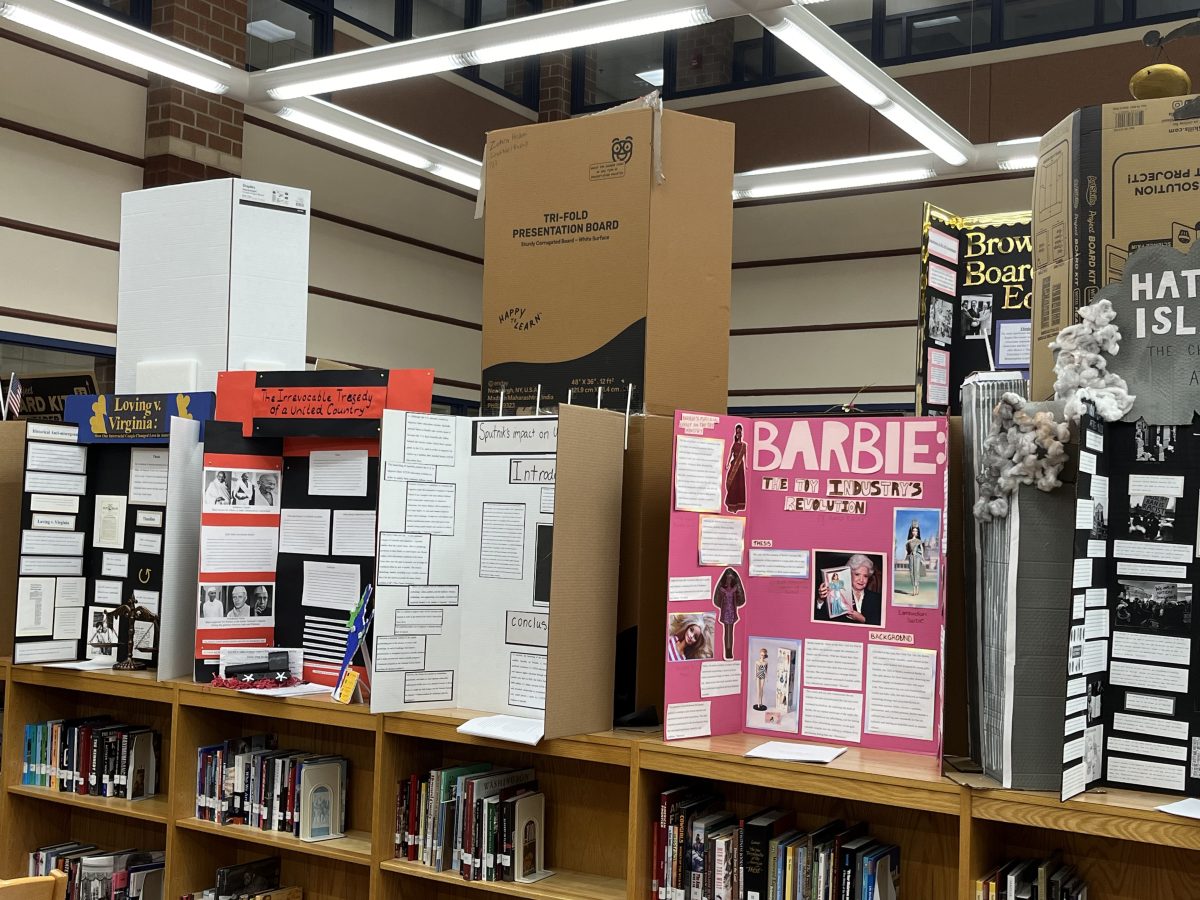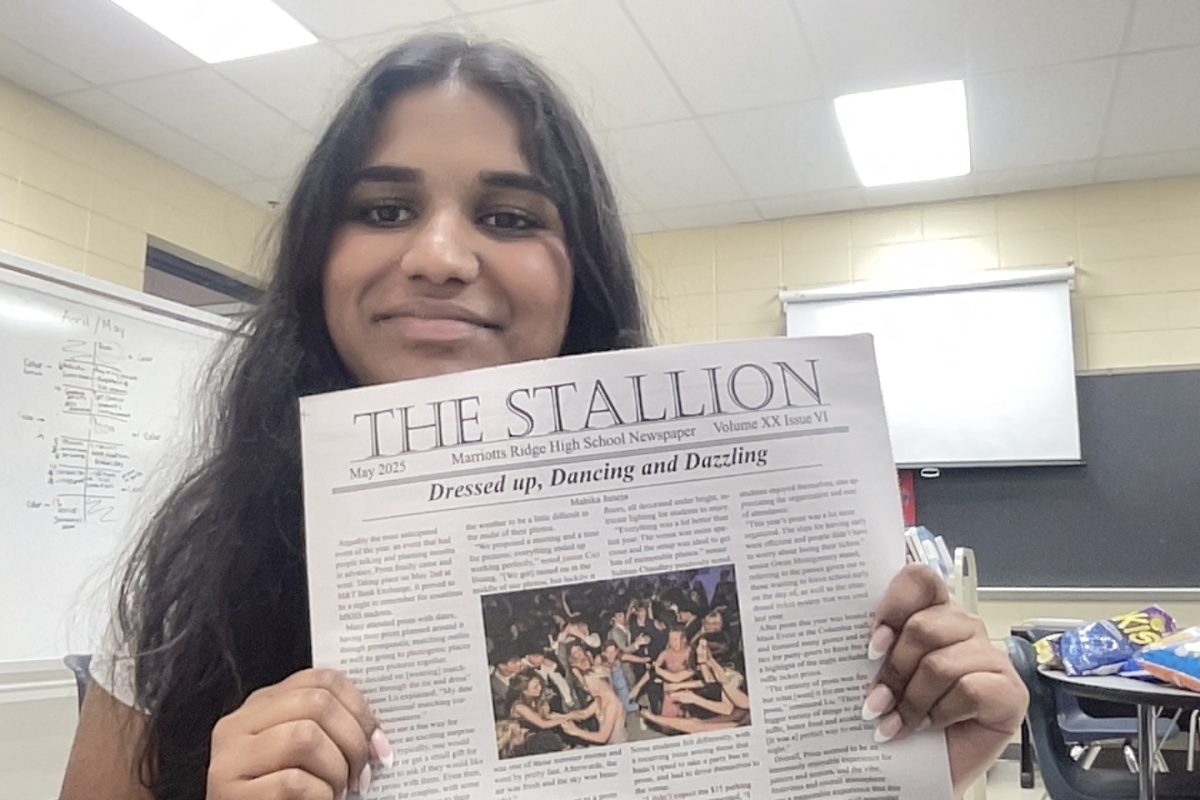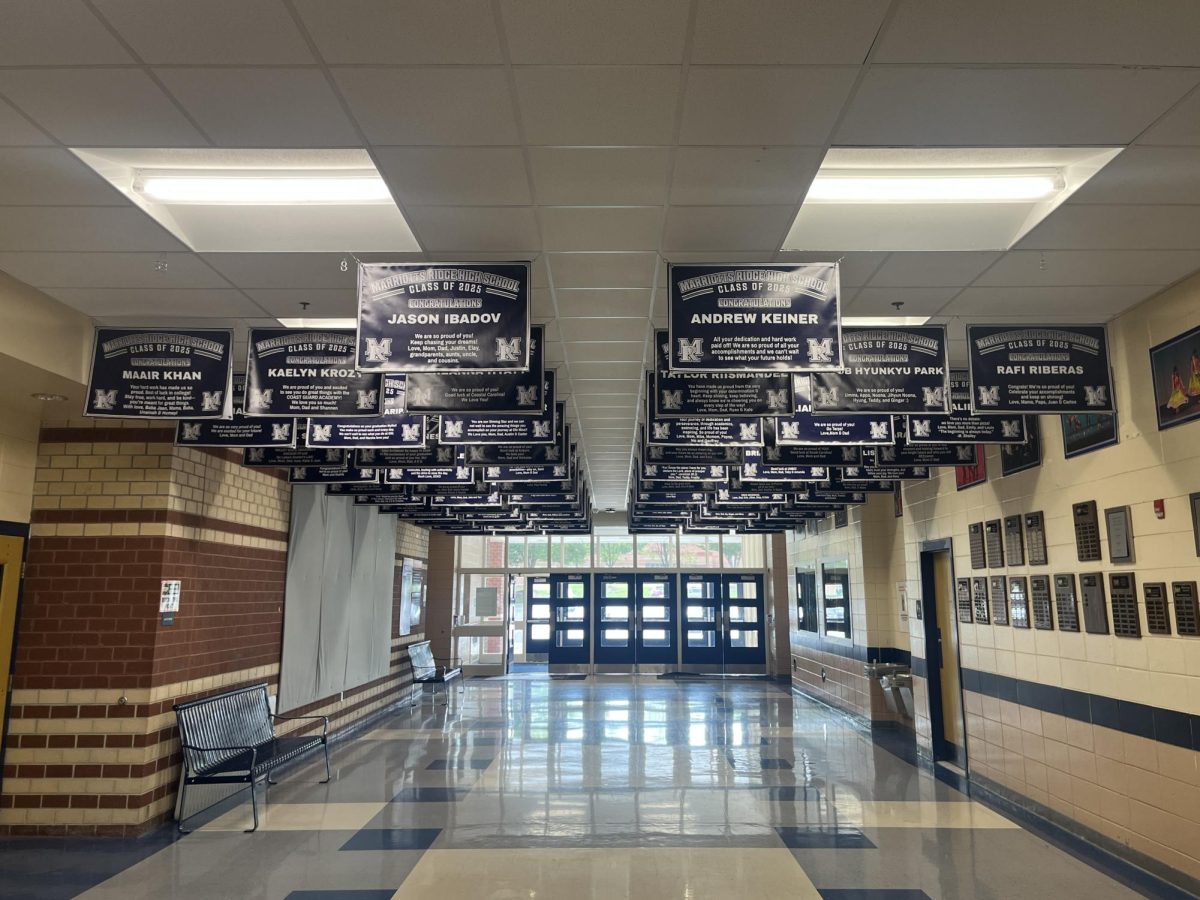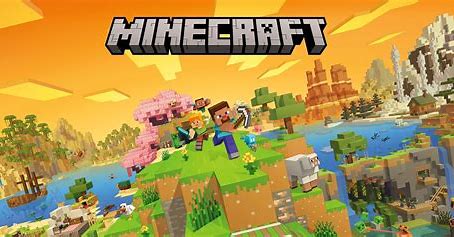Every year, Marriotts Ridge freshmen who are enrolled in Gifted and Talented (GT) U.S. History are faced with National History Day (NHD), a nationwide competition for students to learn the basis of research and create a project based on a topic of their choosing. The chosen topics must fit within a yearly theme, this year’s being “Turning Points in History.”
The tradition of students participating in NHD started in 1974, marking this year’s competition as the fiftieth anniversary for the event. NHD started as a small contest in Cleveland, Ohio where it’s popularity grew over the years to become the important event it is today. Students work from September to February, in and out of class to do research, find sources, compile information, and create a final exhibition of their work. Each student finds their own way to complete the project and the work associated with the task, developing their learning style for years to come.
One aspect for students to be wary of when joining GT U.S. History is the extensive workload associated with NHD. For their first year of high school, the immense work associated with the project can be daunting for many students, requiring them to create a method or schedule that allows them to complete their work in a timely manner. Each student has their own method, some working the night, or few nights before the deadline to complete work, others allocating time for the work over the course of a week or two before the deadline.
“I found out when other people started working on [assignments] and I worked on them around then, and I’d allocate an hour or two a day. Usually in the last week or two,” explained freshman Nate Lee.
Towards the end of their project, students are able to reflect on how their method of learning has worked for them. These students can learn how to improve upon their methods to prepare themselves for the rest of high school.
“[If I could go back], right when we got the assignment, I would do stuff instead of [waiting until later]”, divulged freshman Kaeden Yarema.
For many students, NHD acts as a litmus test for high school work for students. They can use the difficulty of the work and the process of research to understand their strengths and weaknesses as a student. They also learn methods of completing high level research that aids for the remainder of their education.
“Reading sources, especially primary sources, has been easier. [It is easier] to analyze them, because I have grown those skills of being able to look at a source and understand it deeper,” noted freshman Justin Zissu.
The immense workload does not solely reflect on the students. Having to fit work days into the lesson plan and taking the time to grade NHD, the GT U.S. History teachers, Ms. Costabile and Mr. McLagan, must find a way to fit NHD into the already packed curriculum they need to teach before the end of the year. These teachers are required to get through the content faster than they usually would need to so they have time to give students the ability to have time to work on their project.
“It’s definitely hard, I make a lot of choices in first and second quarter to expedite the content, and I pick bare bones of what we are doing in order to make sure that they understand [the content] while also honoring time in class for them to work on NHD,” revealed Ms. Costabile.
One of the main reasons that teachers enjoy having frehsmen students participate in NHD, is because of the skills it teaches students. The teachers believe that learning how to research and apply the information they have learned is imperative to prepare students for post-secondary education.
“[Students] are doing, in 9th grade GT, college level research. They have to locate, read [and] analyze fifteen different sources. Those types of skills, the ability to locate those sources, analyze them, [and] organize those facts into a coherent argument, is really the foundation of a lot of the papers you have to write in college,” voiced media specialist, Mrs. Rashid.
The NHD journey has come to a close for the class of 2027. All of their work culminated into a final project, usually taking the form of an exhibit board, website or documentary. These projects will be on display for the first half of february as students receive their final grade. After grading, students have the ability to move onto counties and even nationals if they have an exceptional project. Afterwards, NHD will be concluded until the next school year, where the class of 2028 will have their chance to make their project.
Categories:
Turning Points in History: NHD’s Fiftieth Anniversary
NHD exhibit boards on display in media center
More to Discover
About the Contributor

Sean Zissu, Managing Editor
My name is Sean Zissu. I am a senior and this is my second year in journalism. In school, I take interest in all parts of STEM. Out of school, I enjoy listening to music, playing piano, and hanging out with my friends. I’m excited to be part of the newspaper again.








